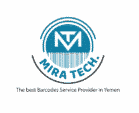New structure
GTIN is the new naming structure for synthetic symbols for ingredients. EAN-8 is now GTIN-8, UPC-12 is now GTIN-12, EAN-13 is now GTIN-13, and SCC-14 is now GTIN-14. Add this new makes it easier and less confusing when dealing with sales writing. Businesses are aiming for this new model, but the terms UPC and EAN are too ingrained in today’s commerce world.
Wide range of facts used
GTINs include:
GTIN-12 (UPC-A): This is a 12-digit number primarily in North America
GTIN-8 (EAN/UCC-8): This is an 8-digit number often necessary outside of North America
GTIN-13 (EAN/UCC-13): This is a 13-digit number most common outside of North America
GTIN-14 (EAN/UCC-14 or ITF-14): This is a 14-digit number that uses items at different form levels.
No changes are required to how the verification number is calculated, how the barcode appears, or the ability to scan a barcode. The new GTIN naming convention integrates retail barcodes into a nice, easy-to-remember family.
Registered and unique
Every GTIN sold by Bar Codes Talk is registered and unique. Companies that purchase from us are registered in the Global Electronic Party Information Register (GEPIR)
Understanding GTINs (Global Trade Item Numbers)
What you need to know about the GTIN
To sell your products in stores, you will likely need to purchase barcode numbers that uniquely identify each individual product. This allows your products to be inspected at the point of sale by your customers and for the store to track your stock levels. As new types of products appear on the market, new standards and methods are developed to ensure that unique number combinations and formats are constantly organized or created. That’s why there are so many different types of product IDs available for use in commerce today.
What is a GTIN?
The Global Trade Item Number (GTIN) is the group of data structures (bar code formats) most widely used internationally. If you are in the market to purchase barcodes for your items, you will likely want to purchase the GTIN type. First, let’s learn more about the GTIN family of product identifiers.

GTINs have many different product code formats
GTIN is an umbrella term, and this code set includes: GTIN-12 (UPC), GTIN-13 (EAN-13), GTIN-14 (EAN/UCC-128 or ITF-14), and GTIN-8 (EAN- 8). The original form of the bar code was UPC (Universal Product Code). Since the UPC system was intended for use in North America only, the EAN (European Article Number) was developed to allow overseas retailers to sell their products. Today, most retailers accept both identifiers.
GTINs are 14 digits long
Since GTINs are 14 digits, in many cases, shorter, pre-existing codes (such as UPC and EAN) are “padded” by adding zeros to the left side of the barcode, for a total of 14 digits. For most retail applications, you don’t have to add these extra leading zeros.

GTINs are licensed when obtained from GS1
Are you looking to purchase or license barcodes? All bar code numbers (GTIN) originate from GS1, formerly known as UCC. Although GS1 no longer sells GTIN directly since 2002, it licenses them directly to consumers. Note that they only license barcodes in bulk. This means that if you have a single product and get your barcodes from GS1, you will need to license a minimum of 10 barcodes, at a cost of at least $250. From there, you will need to pay an annual renewal fee of at least $50 or forfeit your right to use the code.
